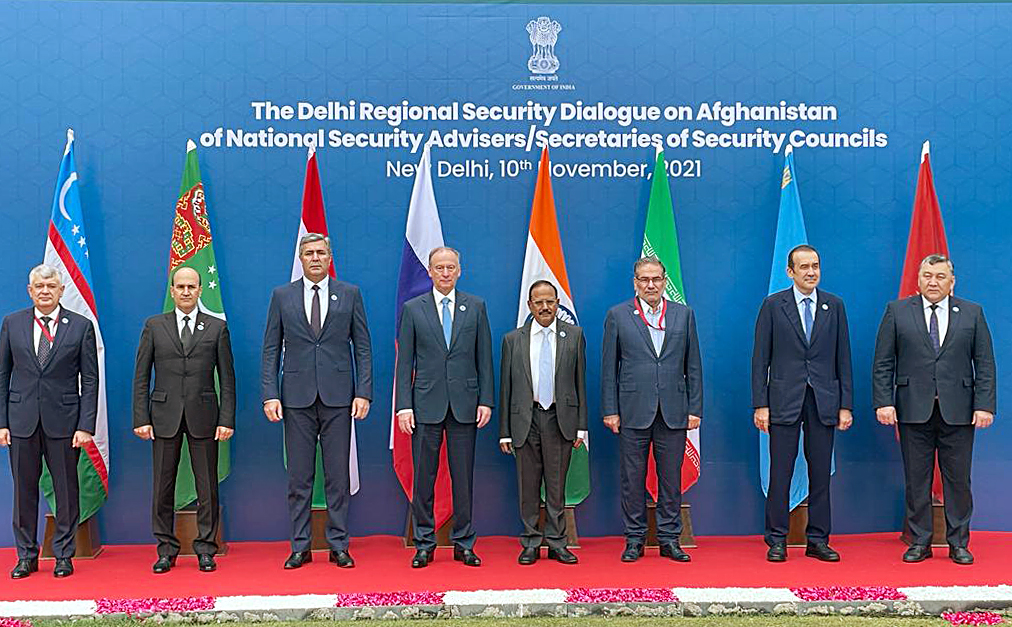Manoranjan Srivastava
The Indian Ocean, the world’s third largest, is warming at a faster rate than the other oceans, due to increased anthropogenic activities. This is leading to sea level rise and increase in frequency and intensity of extreme weather events as well as impacting key weather events like the monsoon in the Indian sub-continent. Despite geo-strategic contestation, collaboration in climate change studies can be non-contentious and has the potential to bring all the vulnerable nations in the Indian Ocean Region together for a common cause.
The concept of Blue Economy has gained traction worldwide due to its potential to provide food security, generate employment, build sustainable economic models, alleviate poverty, renewable energy source and fight climate change. The Blue Economy is estimated to be of more than a US$ 1.5 trillion per year globally and is likely to double to US$ 3 trillion by 2030 as per the Organisation for Economic Cooperation and Development (OECD). The OECD even considers oceans to be the next great economic frontier.
The World Bank has defined the Blue Economy as the “Sustainable use of ocean resources for economic growth, improved livelihoods, and jobs while preserving the health of ocean ecosystem”. Amongst the Sustainable Development Goals (SDGs) which form the core of United Nations 2030 Agenda for Sustainable Development and has been adopted by all UN member states in 2015, the SDG 14, “Life Below Water” is explicitly dedicated to the oceans while many other such as SDG 7, “Affordable and Clean Energy” are intrinsically linked to the oceans.
The Indian Ocean is warming at a faster rate than the other oceans. The warming is leading to sea level rise and increase in frequency and intensity of extreme weather events, causing devastating floods and low-lying areas of nations losing their land areas. The situation in the Indian Ocean is going to be exacerbated by the existing events like ENSO and re-awakening of an ancient climate pattern, the Indian Ocean El-Nino due to the global warming which is fast approaching the tipping point.
Different oceans are known to exhibit different meteorological phenomenon. The Indian and Pacific Oceans are no exception to this. The driving of the global scale phenomenon such as El-Nino Southern Oscillation (ENSO) due to significant basin-wide Sea Surface Temperature Anomalies (SSTAs) and an ocean-atmosphere coupled interaction in the Pacific is well recognised. ENSO has the potential to influence global temperature and precipitations by changing global atmospheric circulation. It consists of warming and cooling phases in which the surface waters across the large region or band of the tropical Pacific Ocean becomes warmer or cooler by around 1°C to 3°C than the normal. The ENSO cycle consists of extreme phases, i.e., El Nino phase during which above-average Sea Surface Temperatures (SSTs) are observed in the central and eastern tropical Pacific Ocean, La Nina phase in which below-average (SSTs) are observed in the same region and the third phase called ENSO-neutral has the neutral conditions.
During the negative IOD phase, cooler than normal SSTs off the coast of Africa and warmer than normal SSTs off Indonesia are observed. The normal circulation therefore gets a boost with westerly winds getting more consistent and convection over Indonesia becoming stronger. This brings greater precipitation to the eastern IO and drought-like conditions for the Horn of Africa. The extreme positive IOD events such in 2019, which was one of the strongest warm Dipole years in last six decades, apart from bringing higher-than-average rainfall and floods in eastern Africa and drought in South-East Asia, also made substantial contribution in setting the stage for the devastating bush fires in the Australia. A monthly Dipole Mode Index (DMI) since January 1979 till 2019 is shown in Figure 1.
The Southwest monsoon, which is spread over four months from June to September, is one of the most complex weather systems in the world. In the most simplistic terms, Southwest monsoon is a phenomenon where the South-easterly winds originating from Mascarene High in the southern hemisphere while crossing the Equator, gets deflected due to the Coriolis force, the trusted lieutenant of the monsoon at the equator and hence become South-westerly.
These winds while travelling over the vast sea area of the Indian Ocean for more than 4,500 km from its source pick up speed and moisture and on hitting the Western Ghats of India result in heavy rainfall. It advances northwards from southern India and over a period of nearly one and half month covers the entire country. The Heat Low formed over Northwest India and adjoining areas due to intense heating during the pre-monsoon or the summer season acts as a driving force for the whole process by creating the necessary pressure difference.
In India, monsoon means transition to rainy season from the hot and dry summer months. The normal date of monsoon onset over Kerala is 1 June. The onset of this much awaited annual weather event is forecasted based on daily rainfall over 14 stations in Kerala and the neighbouring areas, wind field and the Outgoing Longwave Radiation (OLR)15 and hence does not have a fixed date. At times the onset can be early, delayed or on time.

Figure 2 depicts the inter-annual variability of Southwest Monsoon season rainfall since the year 1901 under the influence of El-Nino Southern Oscillation (ENSO), a large-scale climate driver, having three phases i.e., El-Nino, La-Nina and the Neutral.
Generally, a positive IOD results in an above-average rainfall over India whereas a negative IOD is associated with below-average rainfall. The 2023 therefore was an interesting year which witnessed interplay between the El-Nino and IOD. While El-Nino influence was for a suppressed rainfall, the IOD during the latter phase was working other way round doing some offsetting and thus compensating for the deficiencies in the rainfall.
Figure 3 represents the rainfall anomaly composite during Southwest monsoon season for the past El-Nino events (left) and the rainfall anomaly composite during Southwest monsoon season for the past Positive IOD events (right).
The Indian economy is considered as a gamble of the Indian summer monsoon more commonly known as Southwest monsoon. The Long Period Average (LPA) of the monsoon rainfall is 86.86 cm which accounts for nearly 70 per cent of India’s annual rainfall. Being an agrarian society, almost half of India’s population either directly or indirectly depends on agriculture. A bad monsoon therefore invariably is disastrous for India’s agriculture and leads to inflation. Monsoon forecasting thus becomes a crucial input for the agriculture sector, farmers and water management agencies. However, the vagaries of monsoon and its unpredictability makes monsoon forecasting a daunting task despite unprecedented progress made in the field of observational techniques and forecasting models.

The Indian Ocean Region is a vast expanse. The maritime trade route and Sea Lines of Communications (SLOCs) in the IOR, makes it a conduit of commerce connecting Middle East to Southeast and East Asia. The military presence of various countries near the choke points and maritime trade routes to protect the trade has grown over the years, making the region a key economic and strategic theatre. The region is as such mired with the challenges related to Non-traditional Security issues such as Piracy, Illegal, Unreported, and Unregulated (IUU) fishing, drug smuggling, human trafficking, etc., which impacts its security environment.
The geo-political, geo-economic and geo-strategic contestation is therefore a present-day reality in the IOR. Fragility in the IOR environment is a consequence of these complex issues and considerable presence of military presence. The collaboration and cooperation in climate change studies under the umbrella of SAGAR, BIMSTEC and IORA, is arguably the most non-contentious theme which has the potential to bring all the vulnerable nations together for a common cause. This would also help in building an atmosphere of trust and ease out the existing geo-strategic contestation in the region. The story of economic growth in the IOR can only be written on the canvas of peace and trust. The atmospheric and oceanic studies can be this vast common canvas.
Comdt Manoranjan Srivastava (retd) is Research Fellow at the Manohar Parrikar Institute for Defence Studies and Analyses, New Delhi
Views expressed are of the author and do not necessarily reflect the views of the Manohar Parrikar IDSA or of the Government of India.
The full version of this article first appeared in the Comments section of the website (www.idsa.in) of Manohar Parrikar Institute for Defense Studies and Analyses, New Delhi on November 1, 2023


























